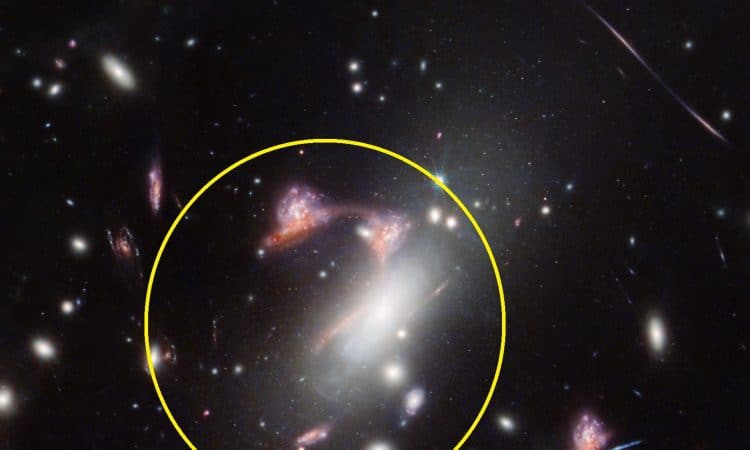
In the summer of 2023, the James Webb Space Telescope dazzled astronomers and science lovers around the world with a photo of a giant question mark. Now, researchers have come up with an answer.
7 billion years ago, the peak of star formation in the Universe was coming to an end. Astronomers today wonder what the Milky Way looked like back then. Well, researchers have found new clues in the form of a giant question mark.
The observations were made possible with the help of NASA’s James Webb Space Telescope.
“We know of only three or four similar cases”
“We know of only three or four similar cases of observable gravitational lensing, which makes (this discovery) exciting because it demonstrates Webb’s capability and suggests that perhaps now we will discover even more,” explained astronomer Guillaume Desprez of Saint Mary’s University in Halifax, Nova Scotia.
Although the cosmic region in the present case has been studied with NASA’s Hubble Space Telescope, the reddish galaxy it forms has only been seen with the help of the Webb Telescope. That’s because the wavelengths detected by Webb were blocked by cosmic dust, and Webb’s instruments are more advanced and can pierce the darkness of space.
The Hubble and Webb telescopes have joined forces
Astronomers used both telescopes to observe the galaxy cluster MACS-J0417.5-1154, which acts like a giant magnifying glass because the cluster is so massive that it distorts space-time. That way, scientists can see details from much more distant galaxies behind the cluster. However, the same gravitational effects that enlarge galaxies also produce distortion, resulting in galaxy blurring and even doubling. These optical illusions in space are called gravitational lensing, he explains.
The reddish galaxy observed with Webb, along with an interacting spiral galaxy previously detected with Hubble, are both magnified and distorted in a strange way that requires a rare alignment between distant galaxies, lenses and the observer. Astronomers call this “hyperbolic gravitational lensing.”
What is the point in the question mark?
The dot in the question mark is a galaxy unrelated to the above that just happened to be in the right place in the right space-time from our perspective on Earth.
“Both Question Mark galaxies show active star formation in multiple compact regions, most likely the result of gas from the collision. However, the shapes of the galaxies do not seem to be disturbed, so we are probably seeing the beginning of the interaction between them,” said astronomer Vicente Estrada-Carpenter.
“These galaxies, seen billions of years ago when star formation was at its peak, are similar in mass to what the Milky Way would have been at that time. Webb allows us to study the teenage years that our galaxy would have had,” added Marcin Sawicki, one of the research coordinators.
The James Webb Space Telescope is the most powerful scientific space observatory in the world. It is an international program and collaboration between NASA and its partners, the European Space Agency (ESA) and the Canadian Space Agency (CSA).

